While Monstera is one of the most beautiful and fastest-growing indoor plants that people keep in their homes, it needs regular repotting to meet its full potential (and for you to meet your full plant-parent potential).
The plant itself has a rigid and extensive root system that can be difficult to manage. Repotting your plant is incredibly important to lengthen its life. Without regular repotting, the plant won’t be able to climb like it’s supposed to.
For those who have a Monstera plant in their home, repotting is one of the most important steps to help keep your plant growing and healthy. Before we dive into the details of how to repot your plant and when to do so, here are some basic tips for Monstera plant care! You’ll want to make sure that it’s healthy before you try to repot it.
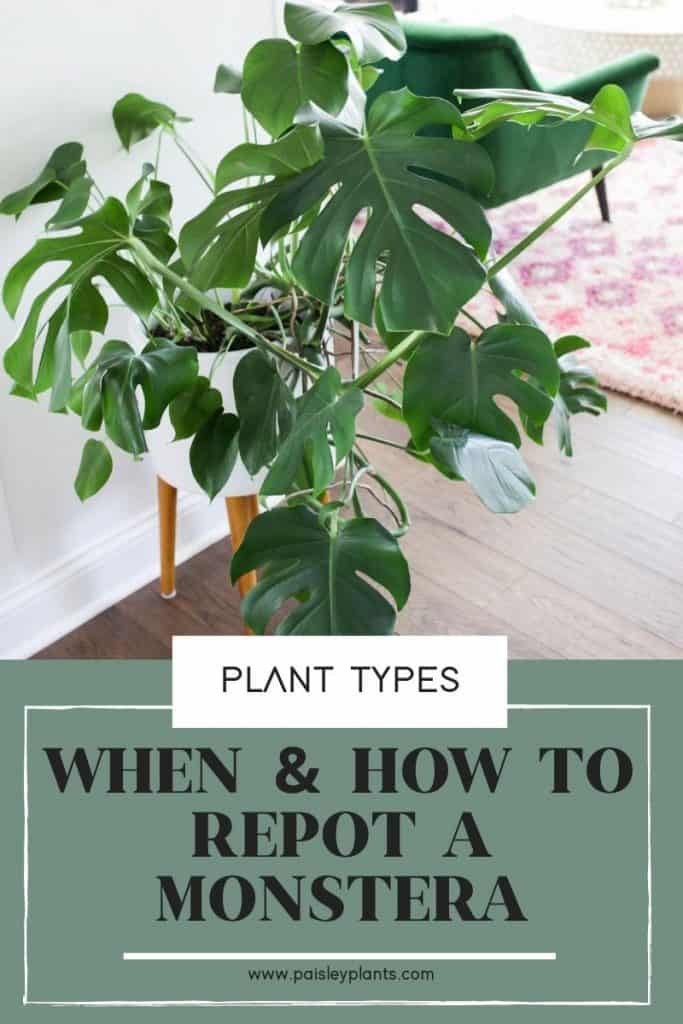
This post includes affiliate links.
Table of Contents
Basic Monstera Care
Many people assume that taking care of a Monstera is really difficult, but it’s one of the easiest plants to care for! It’s also one of the trendiest houseplants that you’ll find, which you’ll easily see when scrolling Pinterest and Instagram!
Not only is Monstera a beautiful plant, but it is a good choice for beginner gardeners and houseplant newbies looking for a new plant as well.
Here are some basic tips for plant lovers to see their Monstera plants thrive and grow.
Light
Light is one of the most important ways to take care of your plant, because Monstera plants need filtered or indirect light. In the wild, these tropical plants grow underneath a bunch of other plants, and they don’t ever have direct sunlight.
Monsteras often thrive under the morning sun. It is a great idea to let your Monstera enjoy the mornings outdoors before you take it back inside during the afternoons’ high temperatures.
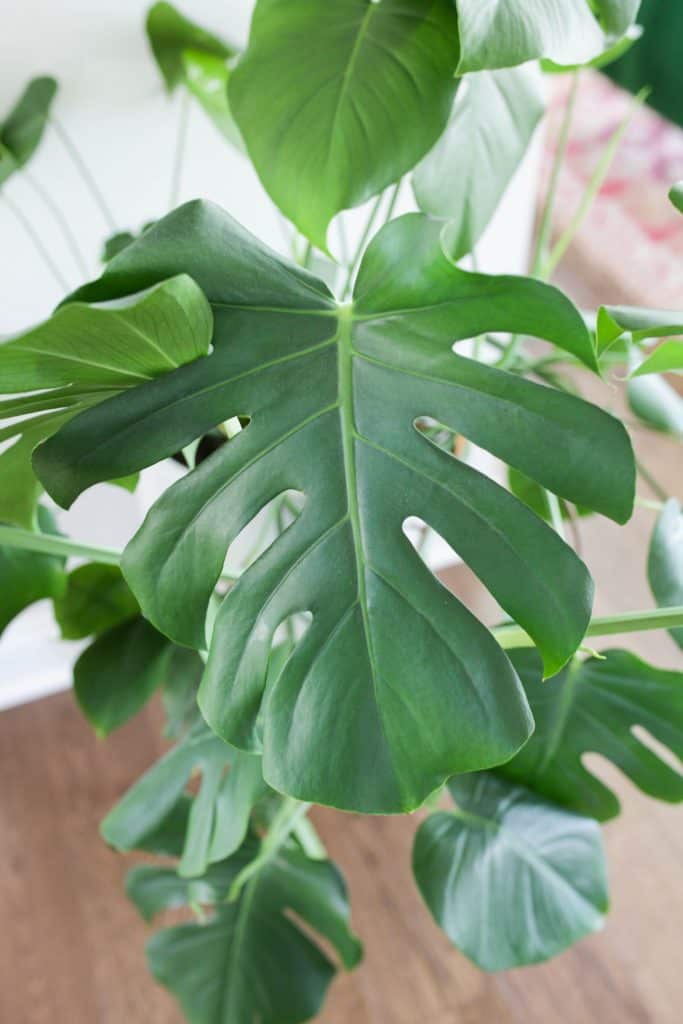
While the Monstera is hardy enough to take some of the darker conditions that people leave their plants in, it won’t help with growth. Even just a little bit of indirect sun every single day will help with the plant’s photosynthesis and its growth overtime.
It is okay to have some days in the dark. Just make sure to have more days with some sunlight for your Monstera. We all do better with a little sunlight, right?
For those who live in an area of strong sun, it’s important to shield the Monstera to make sure it’s protected from too much light. If you live in an area where there’s less sun, make sure it gets enough indirect sunlight every day so that it’s vibrant, healthy, and bright green like it’s supposed to be.
Watering
Watering the right amount is the next step to taking care of your plant. Luckily for those just starting out their plant addiction, Monsteras are very forgiving.

Unlike other more finicky houseplants, Monsteras will not easily die if you overwater or underwater them. This plant is easiest to water if you let the soil dry out at the top of the pot before watering it again.
Use your fingers as a guide to make sure you don’t overwater your plant. Poke your finger in the soil a couple of inches; if it’s dry, it’s time to water.
You may find yourself watering more in warmer months and holding back in colder months as the soil stays moist longer. Filtered water at room temperature or tap water that has been left out overnight are the best for your Monstera plant.
If your Monstera’s stems are drooping, its leaves are curling or turning brown, or there’s no new growth with slits and holes on an older plant, there’s a good chance your Monstera needs more water. No holes or slits could also mean too much light!

Fertilizer
Monstera plants thrive on fertilizer if you’re interested in purchasing some to give it that extra boost. It’s appropriate to fertilize during most of the year except for the winter months.
Most liquid or granular fertilizers will work for this plant, and it depends on your preference. Just check out your local garden center or plant store or even Amazon to see what’s available and get advice on what would work best for you. I personally use and love this one from Amazon.
No matter what kind you use, keeping a fertilizer on hand will help your plant grow and get the nutrition that it needs. It will also be helpful during the months when the sun is the best, promoting growth in the long term.
Growth
One of the best parts of owning this plant, also known as Swiss Cheese plant, is the evolution of the Monstera leaves. This plant is known for being one of the most beautiful, transformative plants that people can have as houseplants.
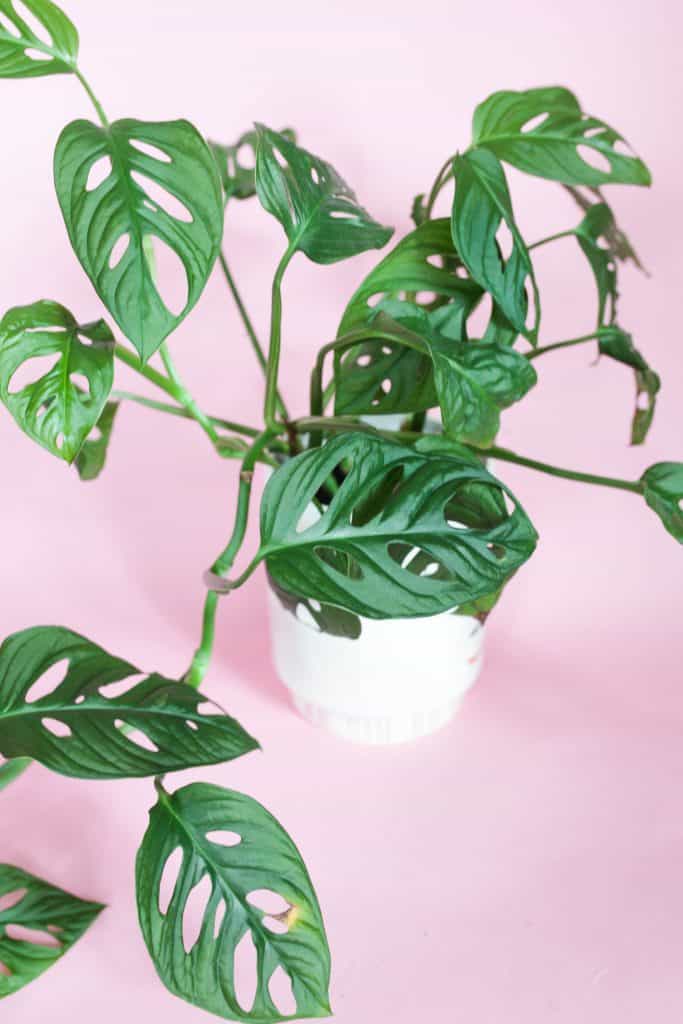
The new leaves grow rather rapidly. As your plant continues to grow and mature, there will be new fenestrations and new progressions from the leaves.
The plant will first grow full leaves. Then there will be splits within the leaf that will begin to develop as it matures.
You can tell a young plant by its solid leaves with no slits or holes. The mature plants will have some slits or holes.
All you have to do to maintain the growth is to properly water, light your plant, and take care of it as best you can. And that leads us to repotting, which is essential to taking care of a Monstera.
If you want even more detailed instructions on how to care for you monstera, head here.
Why Do I Need to Repot My Monstera?
Repotting your Monstera plant into a bigger pot every year or two might seem like a lot of work, but it’s incredibly important that you do so if you want to keep it healthy and growing.
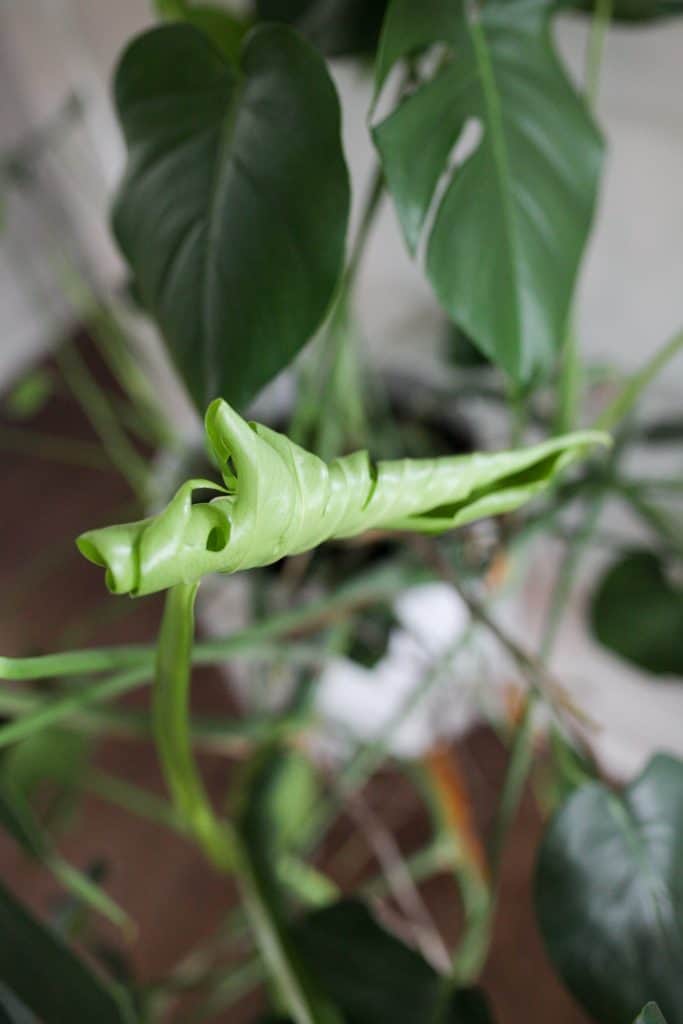
As mentioned, the Monstera is a climbing plant, and it needs more support as it grows taller. It cannot stay within the same smaller pot for the rest of its life, because it will not be able to grow beyond this and won’t thrive.
Repotting a Monstera plant will help you provide room for growth. The roots will often begin to sprout from the pot. That’s when you know it’s the right time to repot.
Seeing the plant’s roots is a sign your plant has overgrown its current pot size already! If you’re not sure, check your pot’s drainage hole to see if any roots are making their way out looking for more room to grow.
Repotting also gives your plant a chance to have fresh soil. This is great for the nutrients and for its health. Changing your soil regularly will help with the Monstera’s growth.
It will also prevent the potting soil from compacting and becoming heavy blocks. This can cause your plant to absorb too much water and lead to dehydration for your plant.
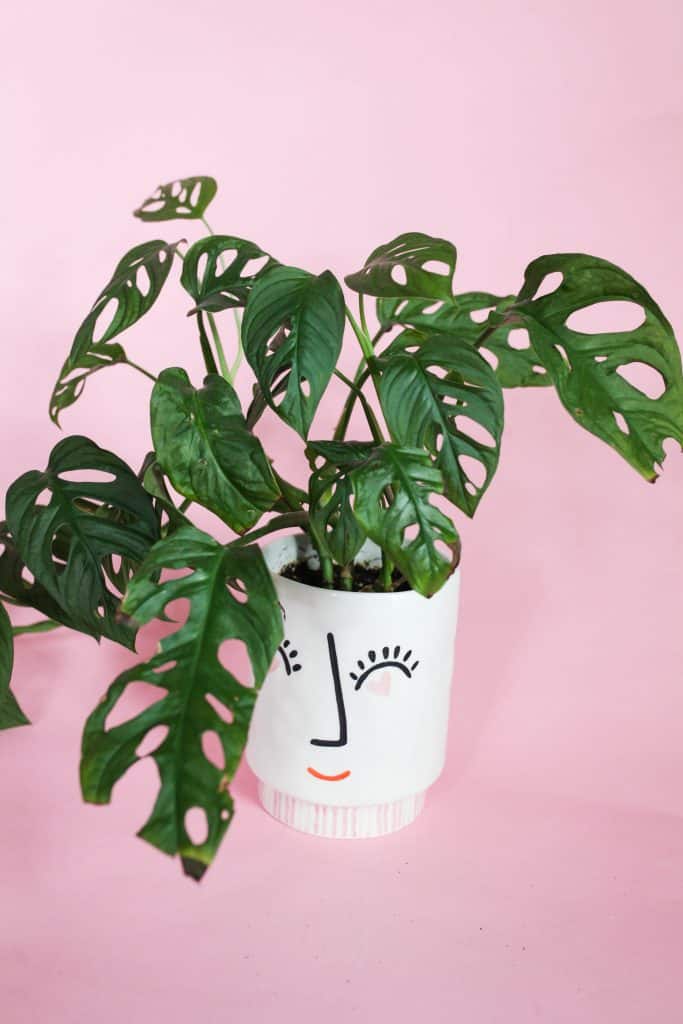
Additionally, repotting your Monstera will also prevent harmful diseases. There are bacteriological infections or fungus issues that the Monstera is susceptible to.
Repotting also gives you a chance to check for root rot and make sure your soil is draining properly to prevent future issues. Without repotting, your Monstera’s overall health could continue to suffer.
When Do I Repot My Plant?
Repotting your monstera plant should happen every single year when it’s young. This is important because it grows rapidly in the first few years of life. It needs a larger pot each year to reach its full potential.
In fact, it is one of the fastest-growing plants that people have as houseplants. This can be good for your confidence when you’re still working on your green thumb, but it makes regular repotting that much more important. You may be surprised in the beginning how quickly it grows.
As your plant matures, its growth will slow down. You may be able to wait two years between repotting sessions if the plant seems to be doing well.
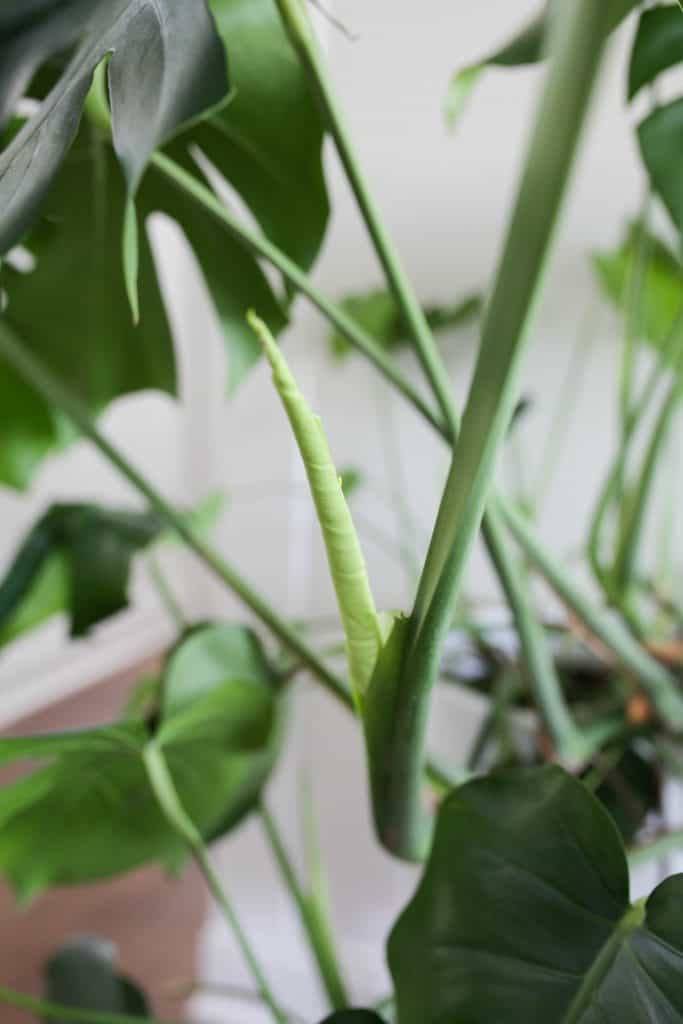
When you’re ready to repot your Monstera, the best way is to choose a pot that’s larger than the one that you are using already. Top dress the plant with nutrient-rich fresh soil, and make sure the roots are properly supported in this new pot.
The best time of year to repot your plant is early in the spring before the new leaves appear. If you wait too long, the new growth will be much too extensive for you to repot the plant. If you try after the new growth has come in, it will be much harder on the Monstera. It recovers more easily in the early spring, so mark your calendars so you don’t miss the ideal repotting time.
How Do I Repot My Plant?
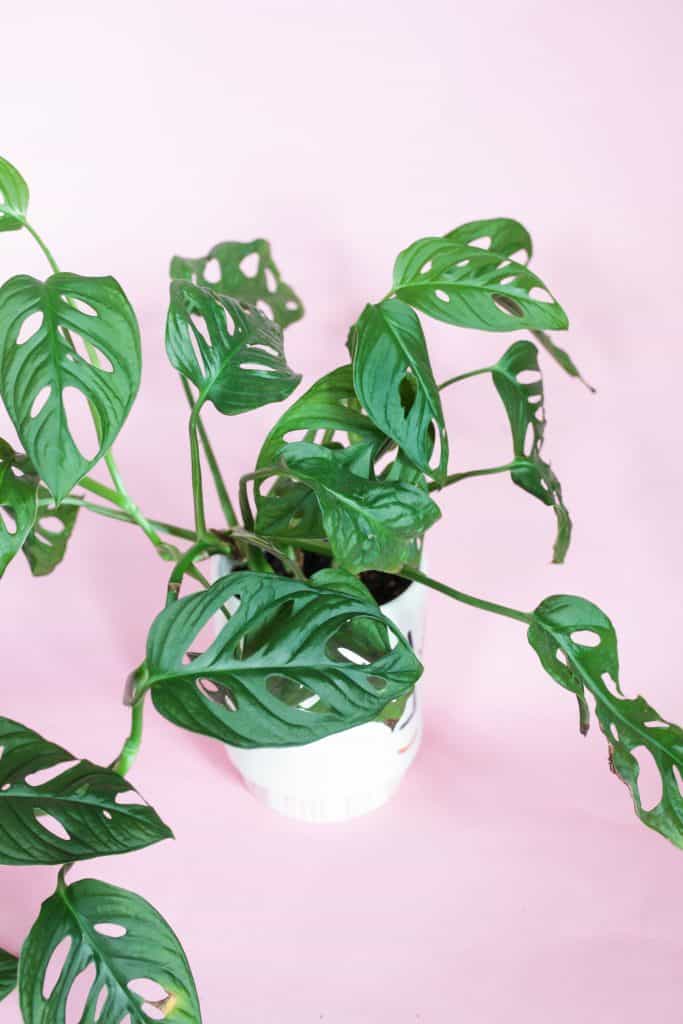
To transfer your Monstera to a larger pot with the best results, there are some steps you need to follow. Here is how you should proceed with repotting your Monstera plant every year.
1. Wait Until Spring
First and foremost, you need to choose the appropriate time, which is usually early spring before the leaves grow in. The early spring is when most Monsteras have a growth spurt, and they can recover quite quickly from repotting.
2. Select Potting Mix & New Pot
Once you have decided on a time, select a new potting mix and a new pot. The pot should have a larger diameter than the previous one that your Monstera plant is outgrowing. The size of the pot should allow enough room to hold the new roots and to hold a solid moss pole in the future, which the Monstera will continue to grow on. If you pick too big of a pot, it will hold excess water, and it will not support the roots effectively. This will result in root rot and other problems.
3. Prepare Pot
Once you choose the best soil and you have the pot, make sure that you prepare the pot by filling at least 1/4 to 2/3 of the pot with the new soil mix.
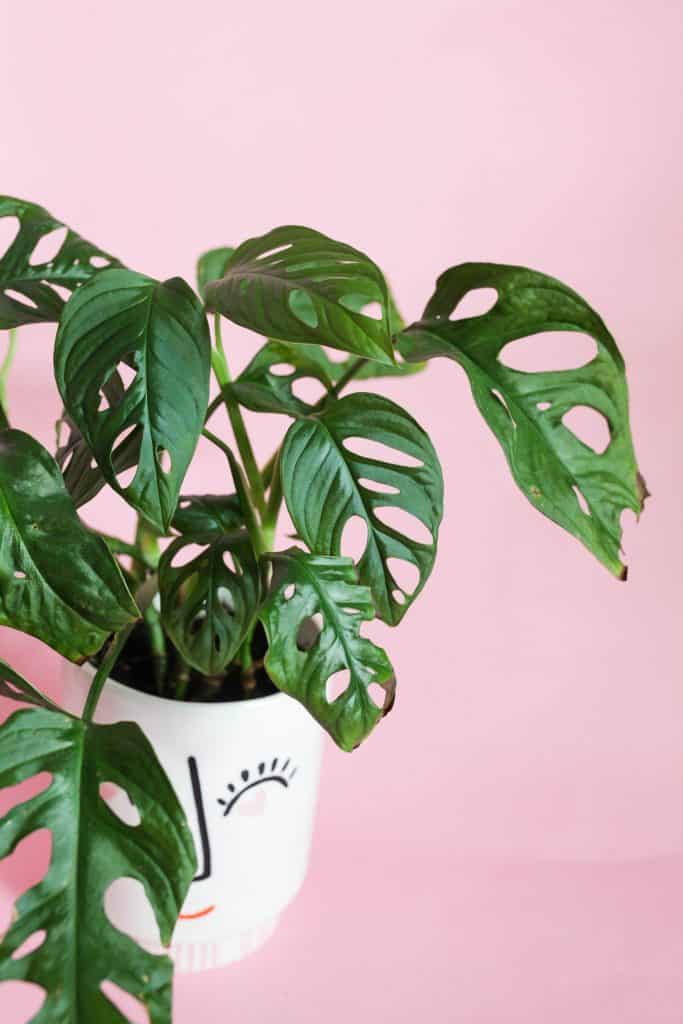
4. Carefully Remove Plant
Then, you need to turn over your old pot with your Monstera in it very carefully to remove the plant. If the Monstera is not moving, you can jiggle the plant slightly to unlock it from its position. However, do not pull your Monstera plant. If you try to pull the Monstera out, you risk ripping at the leaves, the roots, and the stems. This could tear your plant and hurt it.
If the plant is very large, you might need assistance from a friend or a family member to repot this together. You might even need a third person at this point if the plant is incredibly large. Two people can hold the pot while the third person removes the Monstera. Don’t try to be a hero and do it alone. You could hurt yourself and the plant!
5. Put It In New Pot
After you take the plant out of its pot, you can gently place it into your new pot. If you can, tie it to a new stake to ensure it is able to keep growing up. Allowing your Monstera to climb also encourages the growth of larger leaves.
6. Care for Your Plant
From there, you can water it properly, take care of it, and make sure that your plant continues to thrive until the next time it’s ready for a new pot.
With these steps in mind, you will be able to repot your monstera plant and watch it grow and thrive in its new environment. If you follow these steps, you’ll have a beautiful monstera for many years to come!
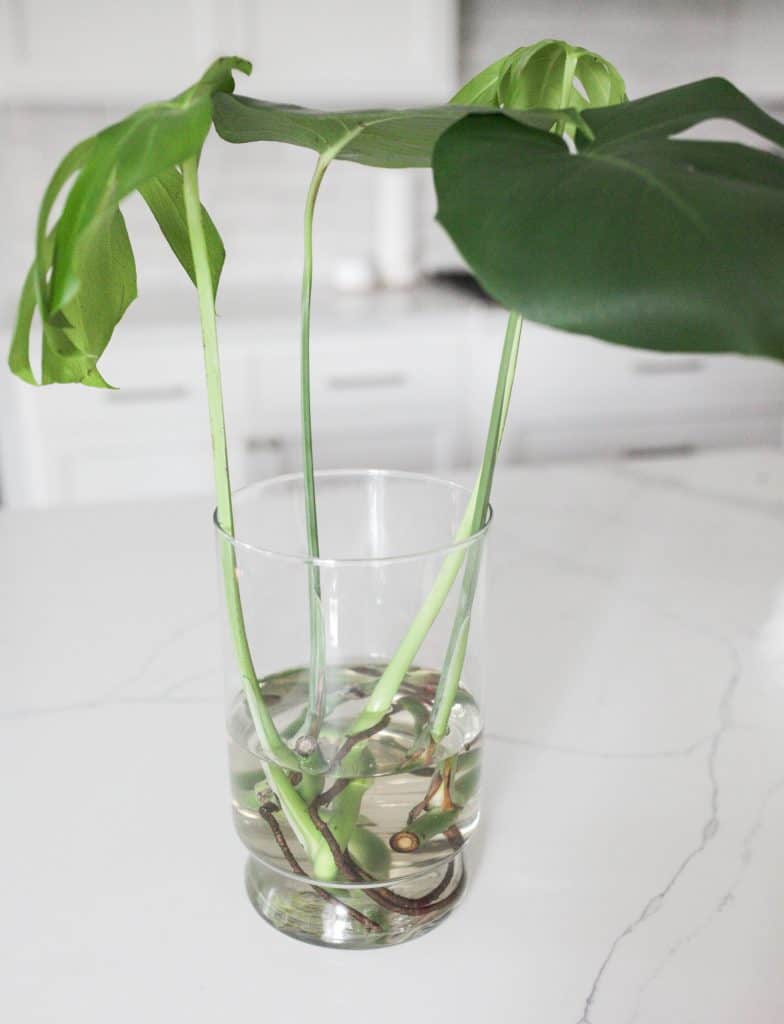
Before you repot your monstera, you can always propagate it! Propagating them are incredibly easy and are a great way to not only multiply your plant but also have great gifts for friends! Find my entire monstera propagation post here!


Thanks for the great info!